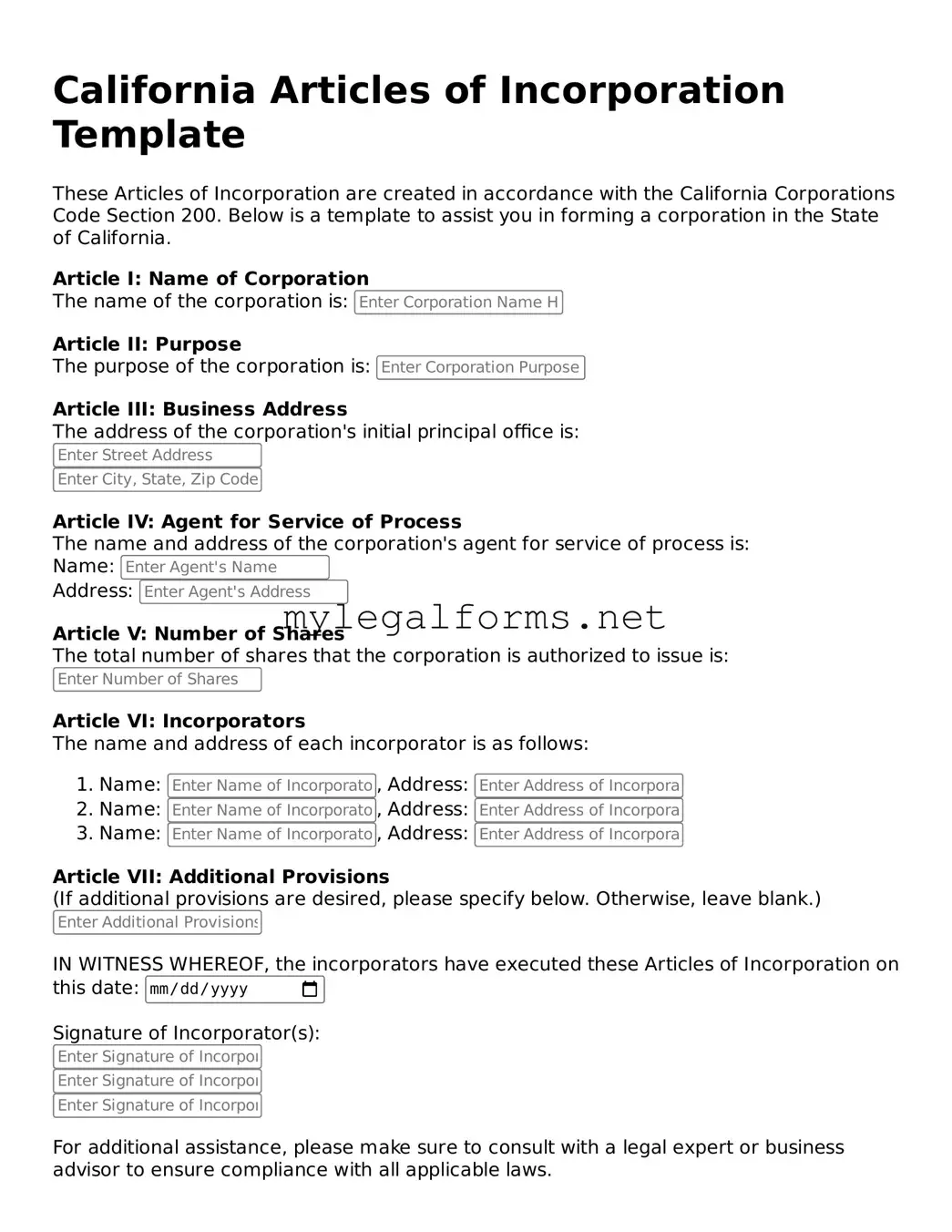Articles of Incorporation Document for California State
The California Articles of Incorporation form is a legal document that establishes a corporation in the state of California. This form outlines essential information about the corporation, including its name, purpose, and the address of its principal office. Completing this form is a crucial step for individuals and groups looking to create a business entity and gain legal recognition.
Launch Articles of Incorporation Editor
